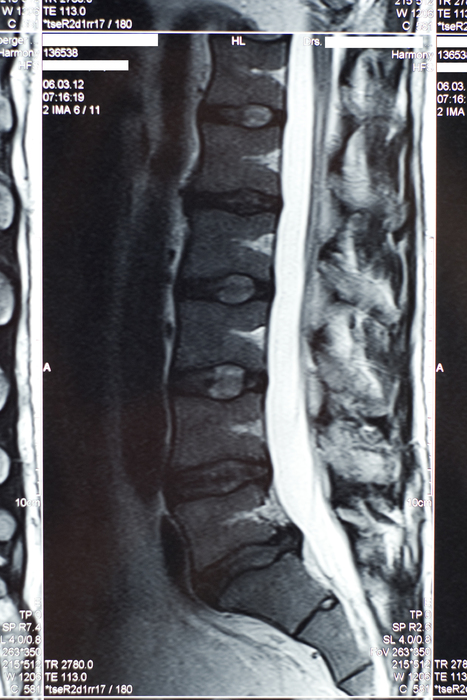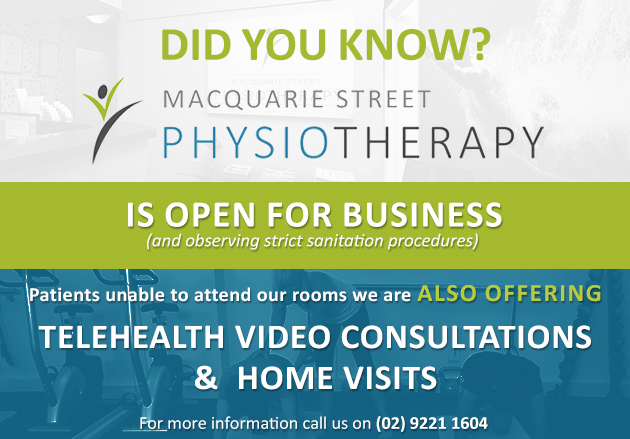News & Tips
Back Pain and the “Slipped Disc”

Acute (recent onset) lower back pain is commonly seen at Macquarie Street Physiotherapy, Sydney. 80 percent of people will experience lower back pain at some time in their life. Whether it be quite debilitating or just bothersome, it is worthwhile having your back pain checked out. If back pain is related to a disc injury, management of it may be different than if you have a spinal joint sprain or back muscle spasm.
“Slipped Disc”
Sometimes the term “slipped disc” is used to describe a disc injury. However, the disc doesn’t actually “slip”. Nor can it be “put back in”. Part of the jelly-like inner part of the disc (nucleus) can escape through a weakening in the fibrous outer layer (annulus). This is known as a herniation. The three classifications of a herniated disc are protrusion, extrusion and sequestration. A disc bulge implies that there is pressure from within the disc on the annulus, pushing it out, without a disc rupture.
As a general rule, irritated or injured discs do not like the “flexion” activities of bending, sitting and lifting. These activities put more strain on the disc. Chances are you are happier to be upright and on the move if you have a disc bulge or prolapse.
Spinal joint sprains or back muscle strains
If your back pain is due to joint or muscle injury, it may also not like bending, but problem movements are more likely to include getting up from sitting, and twisting or standing.
Combination back pain
In many situations there is a combination of disc, joint and muscle involvement causing back pain, especially if there are degenerative changes which involve both discs and joints. These changes can be seen on x-ray, CT scan or MRI. It is interesting to note, however, that 25% of asymptomatic (pain-free) patients below 60 years old show disc herniation on MRI. In the population over 60 years, this number is increased to 33%. This suggests that a disc herniation will not always cause pain. The findings on any scan need to correlate with clinical findings in order to be relevant and determine the plan of action.
Treatment of Back Pain
When there is a disc injury, there is a significant chemical inflammatory reaction. This inflammation alone can cause the pressure on a nerve which might give sciatic pain down the leg. As such, initial management needs to concentrate on reducing inflammation. This can be achieved by rest from aggravating activities, avoiding bending, lifting and sitting, using anti-inflammatory medication, and ice. Physiotherapy for “slipped disc” may include spinal rotations, extension in lying (McKenzie exercises) as well as therapeutic ultrasound, strapping or bracing. Exercises to improve core muscle recruitment may be used, as well as stretches for tight surrounding muscles (e.g., hip muscles).
Recovering from back pain and disc injury
Most disc injuries heal with no need for surgery. If there is leg pain associated with the problem and treatment results in “centralisation” (pain moving closer to the back, and out of the leg) this indicates that treatment is being successful.
If back pain is due to muscle spasm or joint sprain, this often responds well to spinal mobilisation and massage.
At Macquarie Street Physiotherapy Sydney, we see back pain in all its forms and will be able to treat you or direct you for further tests. These tests, along with specialist referral, are particularly important if your back pain is associated with significant leg pain, weakness, numbness or pins and needles.
Prevention
Many back injuries occurs as a result of a trivial movement on a background of instability or poor posture. For example, acute back pain can result from bending to pick a pen from the floor. Functional stability appears to be a paramount necessity for efficient movement and to reduce mechanical stress on the back. This stability is derived from postural training and specific exercises to improve motor control of both the deep core muscles (transversus abdominus, multifidus, pelvic floor and diaphragm) and the outer core (obliques, and rectus abdominus muscles). A general fitness programme is also helpful: this ensures activity of other important muscles, such as gluteals, and thigh muscles.
Chronic Pain
If you have chronic (longstanding) back pain, whether it be due to disc injury or other cause, the direction of treatment is more to do with exercise and movement, as inflammation is usually not a major factor. Hands-on treatment may still be necessary, but emphasis will be on moving well and moving often. Your physiotherapist can help determine whether your back pain is to do with too much or too little activity.
Macquarie Street Physiotherapy located in the Sydney City CBD, specialises in the treatment of neck and back pain. Call 02 9221 1604 to make a booking.








